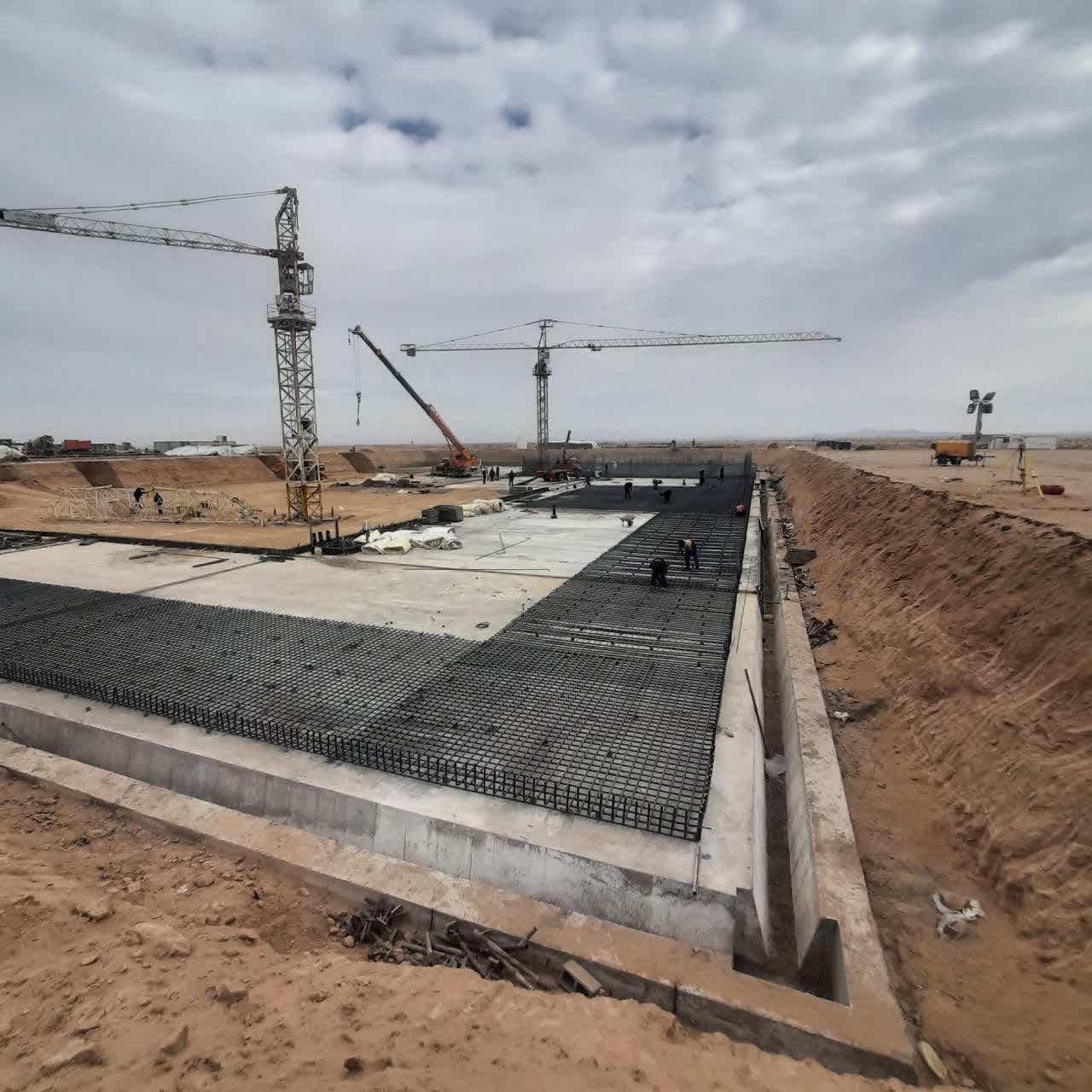
The Isfahan Water Supply Company (IWASCO) was established with the aim of providing the water needed for Isfahan province. After its establishment, IWASCO took on the responsibility of implementing the national project for desalination and water transfer from the Sea of Oman to Isfahan province. In this regard, the company swiftly and diligently recruited experienced and specialized human resources, entered into necessary contracts with consultants, contractors, investors, and equipment suppliers, and carried out the operational activities of one of the largest water intake, desalination, and 400 million cubic meters of water transfer projects from the southern sea through a 1100-kilometer transmission line with diameters of 2000 and 1600 millimeters to Isfahan province, commencing in August 2022.
Introducing the water transfer plan of Oman Sea to Isfahan
The purpose of this project is desalination and water transfer from the coasts of Sirik in Hormozgan province to the provinces of Kerman, Yazd, and Isfahan. The goal is to supply large industries and drinking water resources with a capacity of 70 million cubic meters per year in the first phase ، 200 million cubic meters per year in the second phase and 400 million cubic meters per year in the second Third phase. The main sections of the national project for desalination and water transfer from the coasts of Sirik in Hormozgan province extend to Mobarakeh Steel, Isfahan Iron Smelting, and Isfahan Refinery .

Considering the climatic conditions and crises prevailing in the central plateau of Iran, the supply of the new and sustainable water resources has always been one of the topics hotly disputed and seriously pursued. The desalination and consumption of salty water is one of the methods of water supply being used and exploited by various companies for many years so that even some countries with a hot and dry climate along the Persian Gulf are taking advantage of this resource to change the climate of a large portion of their geography.
It is for about a decade that Iran has pursued the project of desalination and water transfer from the Persian Gulf and the Sea of Oman; as a result of which, some southern provinces have benefited from this project in recent years. However, the transfer of this water to the central provinces still presents challenges such as the use of electricity for water pumping and transfer, the high cost of water transfer, and causing environmental problems in the sea.
The project of transferring the Persian Gulf’s water to Esfahan aims to provide sustainable water resources for the province. This project also intends to transmit the sea water as a sustainable and developable resources to Esfahan in the shortest possible time and at the lowest cost. The foregoing concerns have been largely resolved by conducting expert studies and adopting various measures, including implementation of the value engineering model, examination of at least 164 hydraulic options and more than 20 main routes for water transfer from the south of the country, and finally, identifying and selecting a transfer plan. The first phase of this plan allows transferring water to Esfahan by using a 500 km route out of 900 km route by the gravitational force. As a result of using the gravitational force, not only there is no need to energy and pumping, but it is aslo possible to generate electricity by installing linear turbines, minimizing the negative balance of energy consumption in the project.
It is also possible to reduce the total cost of water to a large extent by reducing the energy costs, producing by-products such as salt, precious metals, etc. Although the studies on identifying the value-creating products and outputs of the project have not still sabeen completed, it is estimated that the total cost of transferring water to Esfahan is nearly the same as the total cost of wastewater transfer and treatment.
The main environmental concern of the project is caused by the salinity of the output water of the desalination and sweetening systems and the transfer of water to the sea.
In the future, by extracting salt and other Total Dissolved Solids (TDSs) from the water flowing back to the sea, transferring the basin from the Persian Gulf to the Sea of Oman, and establishing the connection to the open waters has solved this concern to a great extent.
It is hoped that upon the successful completion of this project and implementation of other similar management plans for water consumption and supply, the permanent flow of Zayandeh Roud can come true in near future.













